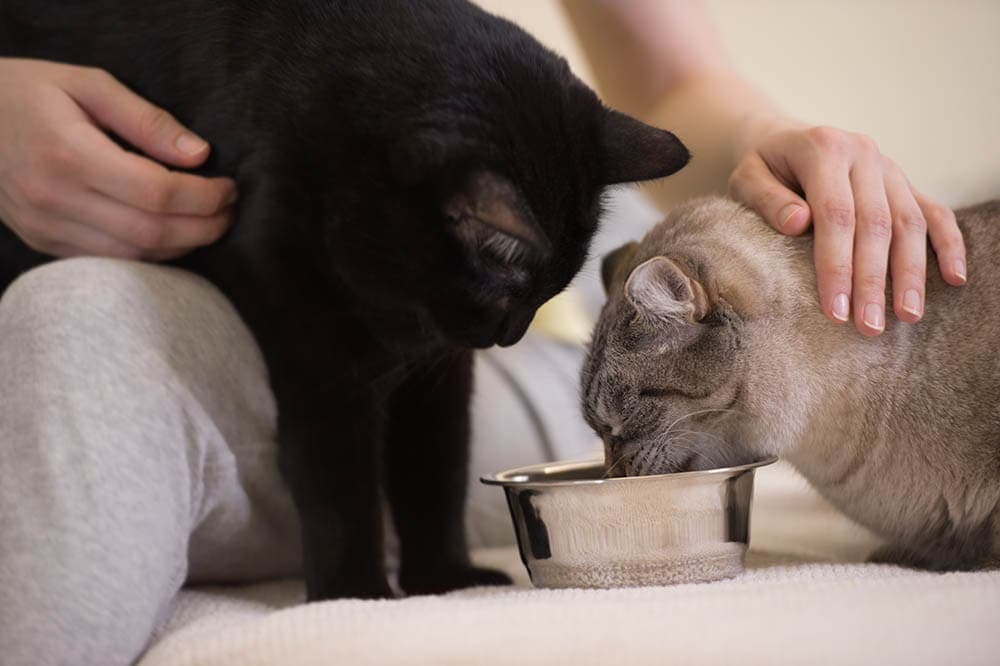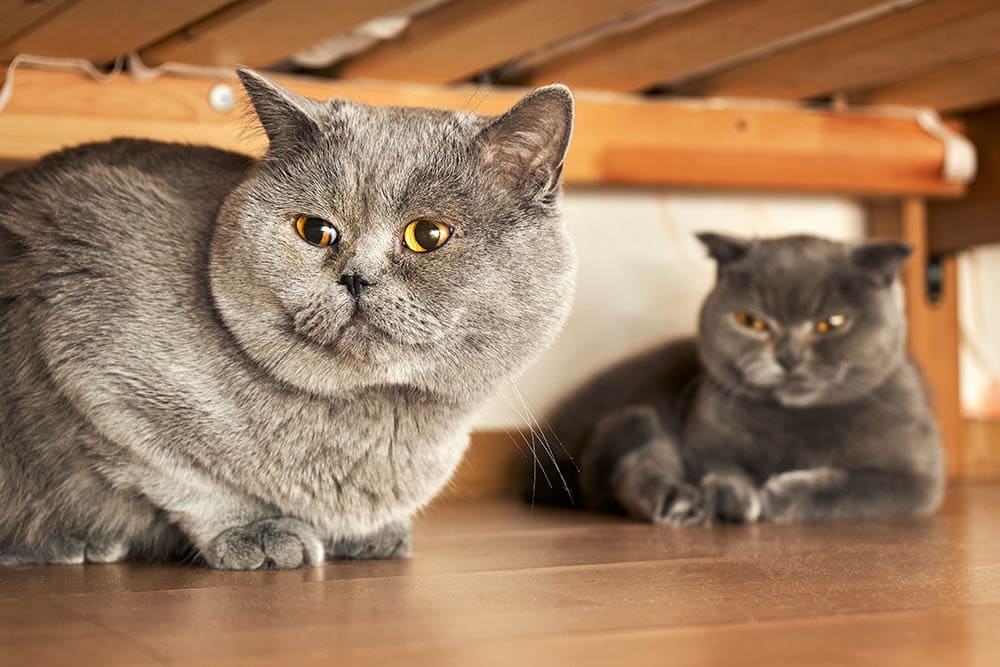
For a lucky few, a resident cat takes to a new cat like a dream, but, often, the introductory process is much longer drawn out due to personality clashes or territorial behaviors. Common causes of aggression toward other cats include a lack of experience being around other cats, anxiety, a new cat being introduced immediately instead of gradually, and protecting resources like food or space.
The good news is that there are ways you can introduce a new cat to your grumpy or aggressive resident cat that should gently ease them into coexisting (at least somewhat) harmoniously. Read on for some tips.
The 7 Tips to Introduce Two Cats When One is Aggressive
1. Give the New Cat Their Own Space
When you first bring your new cat home, keep them separated from your resident cat by setting up a room just for the new cat (not your resident cat’s favorite room). In it, place everything they’ll need, like a litter box, food, water, toys, and a bed, and let that room be the place they get used to their new surroundings.
Meanwhile, let the resident cat roam the rest of the house and get used to the new cat’s smell and general presence without letting them physically meet. At the same time, this lets the new cat get accustomed to the resident cat’s scent without being intimidated.
2. Swap Scents Between the Cats
The next thing you’ll want to do is start swapping scents between the two cats. For example, you could start by letting the cats sniff each other’s bedding, like a blanket or towel. Encourage the cats to smell the item, but don’t force them if they show signs of stress.
If one cat doesn’t take well to the smell of the other cat’s bedding, try moving it a little bit closer to the other cat’s food bowl each day to help them associate the scent with an activity they enjoy—eating.

3. Swap Food Bowls
Swapping food bowls is a great way to help build that positive association between the other cat and the enjoyment of eating. However, this will only work if both cats are on the same diet—switching food types suddenly can cause a stomach upset.
4. Let the Cats Meet Through a Screen
When both cats are accustomed to one another’s scent and don’t react badly to it, you can let them meet for the first time, but this is best done through a screen door or baby gate.
Interact with each cat on either side (you might want to recruit a friend or family member to be on one side) with toys and treats to make the first meetings feel fun and non-threatening for each cat. You can also place the cats’ food bowls on either side of the gate or screen or give treats when the cats are close to one another to create more positive associations.
If these baby gate/screen door meetings don’t go well, go back to the first steps and try again when the cats seem more at ease with the other cat’s scent. This process could take a while, especially with cats that have a tendency to become aggressive.

5. Let the Cats Meet Face-to-Face
When your two cats are interacting positively with one another through the gate or door (signs of this include touching noses, rubbing their bodies against the barrier, or even ignoring each other), you can let them meet face-to-face.
Be on hand to supervise, and, if you spot any signs of aggression, make a noise like clapping to stop them. If one or both cats show aggression on the first face-to-face meeting, separate them and try again the next day.
Never force interactions—if the two cats don’t approach one another, this is completely fine. It’s better to have them ignore one another than fight, and, with time and patience, the two may become friendlier and enjoy each other’s company.
Try playing with the cats together with fun toys like chaser wands and items they can chase and fetch to distract them from any aggressive urges.
6. Stick to Short Meetings at First
Meeting a new housemate can be an overwhelming experience for a cat. Try introducing them face-to-face in short bursts, like 5 minutes at a time before letting them retreat to their own space. Reward each cat with a tasty treat to end the sessions on a high.

7. Make Sure Both Cats Have Their Own Stuff
Remember that your resident cat is used to having everything to themself, like litter boxes and food bowls, so expecting them to share these things is not a good idea and could cause them to feel threatened and become territorial. Ensure that each cat has their own food bowls, water bowls, beds, hiding spots, and litter boxes to prevent this from becoming an issue.
When Will My Two Cats Like One Another?
There’s no straight answer to this question because every cat is different. When they’re introduced properly, some cats may become best friends within a few days, whereas, for others, it could take several weeks or even months. It’s pretty normal for a resident cat to feel a bit put out by the presence of a new cat in their territory, so don’t worry if it takes a while.
If the cats can be in the same room without fighting, even if they completely ignore one another, this is still a great achievement! Some cats will never become very friendly with one another, but can still coexist relatively harmoniously, and, again, this is fine.
On the other hand, if your cats are constantly fighting or one or both of them have issues with aggression that don’t seem to abate, consider discussing this with a cat behaviorist or your vet.
Conclusion
It can be disheartening when you really want your cats to be friends, but they don’t start to get along as quickly as you’d like. We can’t rush these things, though. As long as you go slowly at the pace of the most stressed out or aggressive cat and don’t force anything, with time, your cats should be able to live together in peace.
If aggression is a constant problem that doesn’t seem to lessen with time, there might be something deeper going on, like a medical or behavioral issue that needs a vet’s or professional behaviorist’s attention.
Featured Image Credit: Nils Jacobi, Shutterstock






